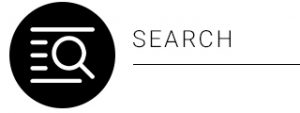INVESTIGATE LIFE AND WORK RELATED PROBLEMS USING DATA AND PROBABILITIES
US 9012
NQF LEVEL: 3
CREDITS: 5
NOTIONAL HOURS: 50
SAQA UNIT STANDARD ALIGNMENT
SPECIFIC OUTCOMES (SO)
Level 3 | Credit 5
UNIT STANDARD 9012 :
Investigate life and work related problems using data and probabilities.
SPECIFIC OUTCOME 1
Specific purposes include:
Determining trends in societal issues such as crime and health.
Identifying relevant characteristics of target groups such as age, range, gender, socio-economic group, cultural belief and performance.
Predicting the likelihood of the occurrence of events.
Considering the attitudes or opinions of people on issues.
ASSESSMENT CRITERIA
On completion of this section you will be able to:
- Situations or issues that can be dealt with through statistical methods are identified correctly. (SO 1, AC 1)
- Variables contributing to a problem situation are identified and addressed in data gathering, e.g. crime is related to time of day and location. (SO 1, AC 2)
- Appropriate and efficient methods are used to collect, record and organise data. (SO 1, AC 3)
- Data samples are of adequate size and are representative of the population. (SO 1, AC 4)
SPECIFIC OUTCOME 2
Represent, analyse and interpret data using various techniques to investigate real-life and work problems.
ASSESSMENT CRITERIA
On completion of this section you will be able to:
- Graphical representations and numerical summaries are consistent with the data, are clear and appropriate to the situation and target audience. (S0 2, AC 1)
- Different representations of aspects of the data are compared to take a position on the issue. (SO 2, AC 2)
- Calculations and the use of statistics are correct and appropriate to the problem. (SO 2, AC 3)
- Interpretations of statistics are justified and applied to answer questions about the problem. . (SO 2, AC 4)
- New questions that arise from the modelling of the data are discussed. (SO2, AC5)
SPECIFIC OUTCOME 3
Use random events to explore and apply, probability concepts in simple life and work related situations.
ASSESSMENT CRITERIA
On completion of this section you will be able to:
- Data are gathered, organised, sorted and classified in a suitable manner for further processing and analysis. . (SO 3, AC 1)
- Experiments and simulations are chosen appropriately in terms of the situation to be investigated. . (SO 3, AC 2)
- Probabilities are determined correctly. (SO 3, AC 3)
- Distinctions are correctly made between theoretical and experimental probabilities. (SO 3, AC 4)
- Predictions are based on validated experimental or theoretical probabilities. . (SO 3, AC 5)
- The outcomes of experiments and simulations are communicated clearly. SO 3, AC 6)
Table of Contents
HOW TO USE THIS GUIDE
ICONS
TAKE NOTE
PROGRAMME OVERVIEW
LEARNING ASSUMPTIONS
HOW YOU WILL LEARN
HOW YOU WILL BE ASSESSED
SECTION 1: POSE QUESTIONS, COLLECT AND ORGANISE DATA
DATA COLLECTION AND ORGANISING
QUANTITATIVE AND QUALITATIVE DATA COLLECTION METHODS
SIMPLE RANDOM SAMPLING
SECTION 2: REPRESENT ,ANALYSE ANDINTERPRET DATA USINGVARIOUS TECHNIQUES
INTRODUCTION
MEASURES OF CENTRAL TENDENCY
CHARTS AND GRAPHS
INTERPRETING STATISTICS
READING AND PLOTTING GRAPHS OF REAL LIFE PROBLEMS
SECTION 3: USE RANDOM EVENTS TO EXPLORE AND APPLY ,PROBABILITY CONCEPTS IN SIMPLE LIFE INTRODUCTION TO EVENTS
EXPERIMENTAL PROBABILITY
THEORETICAL PROBABILITY
HOW TO USE THIS GUIDE
This workbook belongs to you. It is designed to serve as a guide for the duration of your training programme and as a resource for after the time. It contains readings, activities, and application aids that will assist you in developing the knowledge and skills stipulated in the specific outcomes and assessment criteria. Follow along in the guide as the facilitator takes you through the material, and feel free to make notes and diagrams that will help you to clarify or retain information. Jot down things that work well or ideas that come from the group. Also, note any points you would like to explore further. Participate actively in the skill practice activities, as they will give you an opportunity to gain insights from other people’s experiences and to practice the skills. Do not forget to share your own experiences so that others can learn from you too.ICONS
For ease of reference, an icon will indicate different activities. The following icons indicate different activities in the manual.PROGRAMME OVERVIEW
PURPOSE
This Unit Standard is designed to provide credits towards the mathematical literacy requirement of the NQF at Level 3. The essential purposes of the mathematical literacy requirement are that, as the learner progresses with confidence through the levels, the learner will grow in:
a confident, insightful use of mathematics in the management of the needs of everyday living to become a self-managing person
An understanding of mathematical applications that provides insight into the learner`s present and future occupational experiences and so develop into a contributing worker
The ability to voice a critical sensitivity to the role of mathematics in a democratic society and so become a participating citizen
People credited with this Unit Standard are able to:
Pose questions, collect and organise data.
Represent and interpret data using various techniques to investigate real life and work problems.
Use random events to explore and apply probability concepts in simple life and work related situations.
LEARNING ASSUMPTIONS
The credit value is based on the assumption that people starting to learn towards this unit standard are competent in Mathematics and Communications at NQF level 2.
HOW YOU WILL LEARN
The programme methodology includes facilitator presentations, readings, individual activities, group discussions, and skill application exercises.
HOW YOU WILL BE ASSESSED
This programme has been aligned to registered unit standards. You will be assessed against the outcomes of the unit standards by completing a knowledge assignment that covers the essential embedded knowledge stipulated in the unit standards, and by doing a practical assessment to apply the learning to your work situation. When you are assessed as competent against the unit standards, you will receive a certificate of competence and be awarded 6 credits towards a National Qualification.






